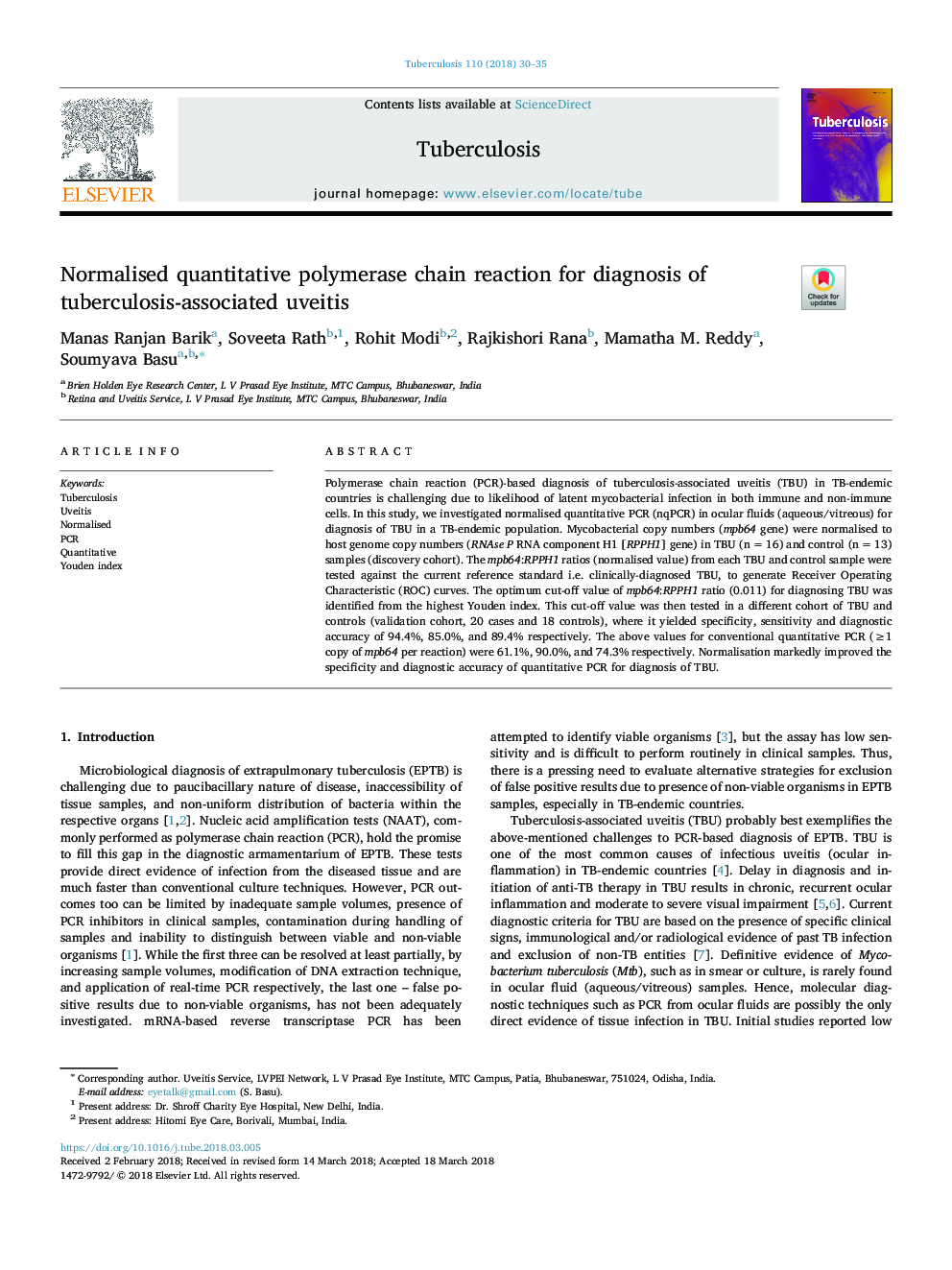| Article ID | Journal | Published Year | Pages | File Type |
|---|---|---|---|---|
| 8485124 | Tuberculosis | 2018 | 6 Pages |
Abstract
Polymerase chain reaction (PCR)-based diagnosis of tuberculosis-associated uveitis (TBU) in TB-endemic countries is challenging due to likelihood of latent mycobacterial infection in both immune and non-immune cells. In this study, we investigated normalised quantitative PCR (nqPCR) in ocular fluids (aqueous/vitreous) for diagnosis of TBU in a TB-endemic population. Mycobacterial copy numbers (mpb64 gene) were normalised to host genome copy numbers (RNAse P RNA component H1 [RPPH1] gene) in TBU (nâ¯=â¯16) and control (nâ¯=â¯13) samples (discovery cohort). The mpb64:RPPH1 ratios (normalised value) from each TBU and control sample were tested against the current reference standard i.e. clinically-diagnosed TBU, to generate Receiver Operating Characteristic (ROC) curves. The optimum cut-off value of mpb64:RPPH1 ratio (0.011) for diagnosing TBU was identified from the highest Youden index. This cut-off value was then tested in a different cohort of TBU and controls (validation cohort, 20 cases and 18 controls), where it yielded specificity, sensitivity and diagnostic accuracy of 94.4%, 85.0%, and 89.4% respectively. The above values for conventional quantitative PCR (â¥1 copy of mpb64 per reaction) were 61.1%, 90.0%, and 74.3% respectively. Normalisation markedly improved the specificity and diagnostic accuracy of quantitative PCR for diagnosis of TBU.
Related Topics
Life Sciences
Immunology and Microbiology
Applied Microbiology and Biotechnology
Authors
Manas Ranjan Barik, Soveeta Rath, Rohit Modi, Rajkishori Rana, Mamatha M. Reddy, Soumyava Basu,
